Economic Justice

Jesus couldn’t afford his own tomb, and neither can thousands of people in this country. A modern funeral costs around $7,000 while the median savings for Americans in 2025 was $8,000—with many people living and dying with far less. Common U.S. practices around death, such as embalming and concrete vaults, take a huge toll not only on people’s finances but also on the environment, leaching harmful chemicals into the earth and slowing the natural process of decomposition.
Jubilee Partners, an intentional Christian community best known for its work welcoming refugees and asylum seekers, keeps a simple cemetery on its 260-acre wooded property. In addition to reducing environmental impact and financial strain, the Jubilee cemetery offers a glimpse of radical hospitality and love of neighbors, even to the very end.
Cemeteries, like just about everything in the United States, tend to be separated, by design or by default, into categories of ethnicity, religion, and class. But the 40 people buried in the Jubilee cemetery comprise a unique underground community where-in those walls of difference crumble beneath a layer of red clay and dirt shaded by a canopy of sweet gum, cedar, and pine. Of the 26 men and 14 women buried there, six died on Georgia’s death row, seven were homeless, 14 came to the U.S. as refugees, several served as pastors and missionaries, one held a Ph.D., some were illiterate, and many found solace and connection during their lives in the offbeat community that named itself after the biblical celebration of Jubilee.
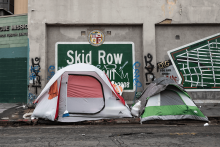
It’s an overcast Saturday morning on Gladys Avenue in Skid Row — a 54-block area in downtown Los Angeles, home to one of the country’s most stable populations of people experiencing homelessness or housing insecurity. Andrew Jiang of Alhambra, a city in western Los Angeles County, is there with a group of around 15 other volunteers with the Friars and Sisters Poor of Jesus Christ to serve chicken, rice, and vegetables to some 150 people living on Skid Row. On other days, a team of friars, nuns, and volunteers will walk block to block, distributing up to 400 sandwiches to more than 200 people.

EVERY MONTH, TERRY KELLY sends a “rent” check to the Duwamish Tribe on behalf of Quest Church in Seattle, where Kelly serves as senior director of finance.
The church owns the property where it holds services. But the congregation’s monthly payment acknowledges and honors the Duwamish people and other original inhabitants of the land the church occupies, people who have never been “justly compensated for their land, resources, and livelihood,” as the Duwamish “real rent” program puts it.
Members of Quest Church are among the many people of faith who are reimagining the narrative of money in our world today.
The early Christian church was clear in its teachings that money was intended to be used for the benefit of the broader community, not for individual enrichment. But for centuries, and particularly since the Protestant Reformation, the institutional church has more often contributed to ideologies and illusions that reinforce the American form of hypercapitalism. And while money remains a highly visible reality in our everyday existence, our lived stories around money often go uninterrogated.
In America, our views about money tend to be very individualized. We ask questions such as: How is my money going to work for me? Will I have enough to pay bills or retire comfortably? What is my purchasing power? Even the story churches tell is often limited in scope, reduced to teaching about tithes, offerings, building funds, and missions giving. In some instances, we might see positive moves around personal budgeting and reducing debt. But church conversations about money are often left in the realm of personal finance.
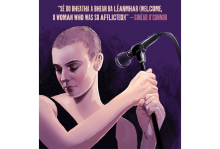
For a decade or so, beginning in the 1970s, members of the intentional Christian community that founded Sojourners magazine practiced a form of economic sharing we called the “common pot” — all our income was pooled for the good of the whole community. In doing so, we sought to model ourselves after the practices of the early Christian church, the first followers of Jesus, as described in Acts 2 and 4 — “All who believed were together and had all things in common” (Acts 2:44); “Now the whole group of those who believed were of one heart and soul, and no one claimed private ownership of any possessions, but everything they owned was held in common” (Acts 4:32).
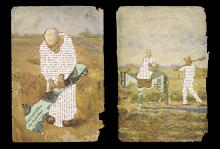
IN A JUST ECONOMY, everyone who wants a job has one, and it pays a living wage, sufficient for workers and their families to thrive. Everyone’s material needs — for nutritious food, safe and secure housing, transportation, clothing, utilities, education, health care, and economic security — are met. Economists call this full employment in living wage jobs, and it is a goal of many justice advocates. It is also God’s vision for society.
Jesus told the disciples that he came so all may have abundant life (John 10:10). As Jesus showed, God’s vision encompasses more than abundant spiritual life. Jesus understood that God’s vision of abundance encompasses material needs as well as spiritual ones. Jesus healed broken bodies. He fed hungry people and encouraged others to do so as well. In God’s reign, everyone’s material needs are filled. But how does God envision this to happen?
The Old and New Testaments reveal a great deal about God’s intentions for the economy, the word we use to describe the way in which we use God-given natural resources — soil, rain, sun, fuels, minerals, trees, etc. — in combination with human effort and ingenuity (also given by God) to produce all our goods and services. We can gain important insights relevant to our economy today by examining the economic circumstances of the Israelites during three different biblical eras and then exploring what the biblical writers and Jesus taught about the economy and economic injustices during those periods.
Over the more than 10 centuries during which the biblical narrative was composed, the economic circumstances of the Israelites changed markedly and, in response, so did the economic instructions in the Bible. But, surprisingly, in each of the three eras, the instructions called for livelihoods for all that enabled thriving or, in our language today, full employment in living wage jobs.
In the Old Testament — the Hebrew Bible — the economic instructions are part of the laws found in Exodus, Leviticus, and Deuteronomy. Today, Christians often insufficiently value this body of law. Some of it seems strange to our modern ears. Other provisions fall far short of current standards for justice — for example, slavery and patriarchy were normalized then. Certainly some of our laws today will fall short of more enlightened future standards. But as we will see below, the law contains much timeless wisdom. To the Israelites, the law was a gift from God, a blessing, a guide to more joyful and fulfilling lives lived in right relationship with God. Psalm 23, one of the most beloved and well-known biblical psalms, tells of the comfort derived from God-the-Shepherd’s rod and staff, tools used to guide sheep in safe, life-giving paths. If we are open to it, we can gain important insights from the ancient laws.
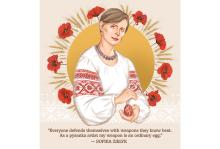
IN THIS ISSUE, ethicist Larry Rasmussen explains that human economic activity has transformed not only our relationship to the world, but the world itself — we are now in an era where “everything turns upon humanity,” as Dietrich Bonhoeffer put it in a different context. While this new “totalizing” reality of what people are doing to the planet has become virtually undeniable, the human tendency toward unceasing growth, as Jim Rice points out in his column, is still defended by economists, headline writers, and the rest of the “more is more” crowd.

Wrestling with the complicated legacy of Christians and international adoption.

AT THANKSGIVING, MILLIONS of us across the country gather around tables. Gratitude will be expressed for blessings both great and small, which indeed is an opportunity to trace the goodness that enfolds our daily lives. Gratitude is one of the more ancient practices of our human society. It has long been observed across different religions, researched in the field of psychology, and mused over by philosophers. Orator and philosopher Marcus Tullius Cicero wrote, “Gratitude is not only the greatest of virtues, but the parent of all others.”
One of my most formative perspectives on gratitude comes from Indigenous practice. Indigenous cultures in the Americas have observed collective practices of gratitude that have long preceded our legislated day of thanks. The Haudenosaunee Confederacy, also known as the Iroquois or the Six Nations, have a daily Thanksgiving Address recited by school children just before classes begins. This is a practice author Robin Wall Kimmerer calls “an allegiance to gratitude.” The address uses gratitude to trace life-sustaining provision to the Creator, to the community, and to every food and water source, through every plant, every creature, and even the land itself. Gratitude is essentially ecological this way.

I WAS SITTING in a large auditorium full of market researchers. A speaker suggested that, by selling wrinkle cream, we were helping to make the world a better place because women would feel better about themselves. I looked around the room, thinking, “Is everyone buying into this? Do people really think this is true, or do they see that it’s just a corporate pep talk?”
I had worked in the world of international market research for nearly 10 years. Though there were a few moments like this one when something just didn’t feel right, in many ways I still didn’t see the issues I see so clearly now — marketing techniques are the air we breathe.
I eventually left my work in marketing to pursue a master’s in social justice and a doctorate in theological ethics. I began to investigate how marketing practices negatively impact how we live as human beings and how we think about marketing in the church. In contemporary society, we tend to view marketing techniques as neutral tools that can be applied in different contexts — whether for businesses, nonprofit fundraising, or church communication. But can we adapt tools that have been developed in the context of capitalistic profit maximization to the mission of the church? Are there fundamental differences in how the church views and relates to human beings?
I had worked in the world of international market research for nearly 10 years. Though there were a few moments like this one when something just didn’t feel right, in many ways I still didn’t see the issues I see so clearly now—marketing techniques are the air we breathe.

WHY THE RECENT surge in union activity? The nationwide shortage of workers is one factor, to be sure, as is the COVID pandemic. But another contagion might be even more important: Hope. “You see it most clearly with the Starbucks campaign where they won those initial two victories, and it was like a switch going off for people: ‘We can do this!’” labor attorney Alex van Schaick told Sojourners. “There was a contagion effect, in a positive sense. Hope is contagious — I think that’s really true.” Clayton Sinyai, executive director of the Catholic Labor Network, agreed that the confidence and resolve of workers is making a dramatic difference. “It seemed for a long time that employers had gotten so skilled at manipulating the union election process that a lot of people had become very discouraged about trying to form unions,” Sinyai said. “Now we’re seeing a generation of workers who are not taking no for an answer.”
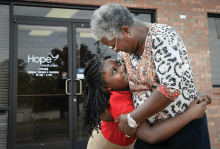
IN THE 1960s, Louise Morphis stored her money in a neighbor’s garage in the small town of Bynum, N.C. The rural Southern town’s white-run banks refused to serve the Black community, so the neighbor, vice principal of the local Black public school, housed a credit union in his garage through the 1990s.
“Some people go to the bank, some people have to go to the garage,” Morphis’ grandson, William J. “Bill” Bynum, told Sojourners. Those early memories of economic injustice stayed with Bynum, who was born in East Harlem and moved with his family when he was age 5 back to Bynum—“an old mill town actually named after my ancestors who had once worked there as slaves,” Bynum told the Delta Business Journal last fall.
In 1995, Bill Bynum helped found his own version of the “garage bank” his grandmother used. That seedling project, begun in the tithing room of a church in Jackson, Miss., became Hope Credit Union. Today, Hope has 23 branches and has generated more than $3.6 billion in financing in the Mississippi Delta region and across the Deep South.
Hope found its purpose in places where—as in Bynum’s hometown—entrenched generational poverty can be traced back to slavery. “If you look at a map of the country prior to the Civil War, and where slavery was concentrated, and a map today of where you have the worst job conditions, housing conditions, education outcomes, health outcomes, and where you have the fewest banks and the most payday lenders, they’re the same,” said Bynum, who serves as CEO of Hope Credit Union. “There’s a legacy of underinvestment and—no other way to describe it—institutional discrimination that limits opportunity.”
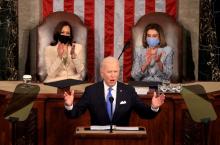
The State of the Union, the annual televised presidential report to Congress, can easily devolve into political theater. But at its best, the address provides the president a critical opportunity to galvanize the nation to overcome shared challenges. When President Joe Biden delivers his first official State of the Union on Tuesday, in addition to addressing the Russian invasion of Ukraine, I hope he seizes the moment by tapping into the values that animate his Catholic faith — including the values of solidarity and a “preferential option for the poor.” Solidarity, as understood through Catholic social teaching, is based on the understanding that we are one human family — our brothers’ and sisters’ keepers. We see this preferential option for the poor in Jesus’ dual call to care for the most vulnerable (Matthew 25) and combat injustice by being “good news to the poor” (Luke 4).

OUR CLOTHES BEAR more than our personal style. Stitched into favorite garments is the suffering of those who made them.
From Bangladesh to Vietnam, millions of garment workers are exploited to feed the burgeoning demand for ready-made wardrobes. These workers endure unsafe working conditions and workplace abuse to meet the mounting quotas imposed by hungry clothing brands—all while being paid pennies per hour.
Garment workers’ labor conditions seized the attention of international media in 2013 when the Rana Plaza factory collapsed in Dhaka, Bangladesh, killing more than 1,100 people. This disaster accelerated the work of human rights organizations such as the Worker Rights Consortium, the Maquila Solidarity Network, and the Clean Clothes Campaign that were already collaborating withcorporations to implement safety protocols in the supply chains. This collaboration birthed the Accord on Fire and Building Safety in Bangladesh (the “Bangladesh Accord”), which was the first international agreement to include global brands, retailers, and trade unions in a legally binding framework.
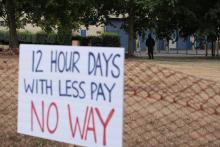
The latest headlines are filled with news of worker shortages, delayed supply chains, and labor strikes. Cornell University’s School of Industrial and Labor Relations strike tracker reports more than 181 strikes so far this year, with 38 of them taking place in the first two weeks of October, spurring the AFL-CIO to name this month “Striketober.” These strikes span all kinds of industries, from hospital workers to whisky makers.

IF JESUS HAD been in Bessemer, Ala., he would have stood with the workers who tried and failed to organize the Amazon distribution center there.
That was the firm conviction of Joshua Brewer, a lead organizer for the Retail, Wholesale, and Department Store Union (RWDSU). “It’s everything we’re told to do—to look out for our brothers and sisters in need, that a [person] should be paid for an honest day’s work an honest day’s wage, that we need to look out for the immigrant, that we need to look out for the widows and the children and the orphans, and we need to look out for each other,” Brewer told the Alabama Political Reporter in the heat of the campaign.
Brewer was hardly alone in his belief that the Bible offered clear sanction for RWDSU’s fight. On-the-ground reporting underscored that organizing meetings began with prayer, and that an instinctively pro-labor faith steeled many of those who participated in the campaign. In longer historical perspective, none of this is surprising. From the beginning, many workers who powered the labor movement did so with the confidence that Jesus, a lowly carpenter, had their backs.

“THEY WERE AFRAID.” Those are the last words of the earliest manuscripts of Mark’s gospel (16:8)—the oldest of the four gospels. Mark ends his story about Jesus with Mary Magdalene, Mary the mother of James, and Salome at the empty tomb. Terror seizes them. They flee in shocked silence. The end. What kind of Easter is this?
Scribes and theologians thought the same, so a couple centuries later they added different endings to Mark—easier endings, with Jesus coming back to offer further teachings. In Mark’s original Easter account, however, there is no resolution to the story. Instead, we read about three women at a tomb, bewildered. Here, resurrection doesn’t resolve anything. Instead, the event unsettles. The absence of a corpse provokes questions and invites a hope in the promise of unimaginable possibility. “Jesus is going ahead of you to Galilee,” a strange messenger in the empty tomb tells them, “there you will see him.”
Easter is an ending without a conclusion, a story without finality. The end returns us back to the beginning—to Galilee, where Jesus was born, where he was baptized, where he gathered disciples, where he healed the sick, fed the hungry, and preached good news. Resurrection means that nothing, not even death, will prevent Jesus’ invitation for us—who are weak and fearful, bewildered by a world we can’t control—to follow messengers who guide into the mysteries of Christ in the here and now.

In 1994, Congress passed the North American Free Trade Agreement (NAFTA), establishing a template for free trade deals that was neither free nor fair. While North American trade tripled and corporations profited under NAFTA, the costs were borne by manufacturing workers across the U.S. and Mexico, smallholder corn farmers, and our environmental commonwealth. These trade consequences contributed to migration to the U.S.
The dirty secret about free trade agreements is that much of the content has little to do with trade. They serve to maximize corporate profits by pressuring countries to weaken or jettison domestic laws that serve the common good—such as public health, financial, and environmental regulations—to make room for policies that serve corporate interests and economic superpowers. Corporations and other nations can sue for perceived “unfair treatment,” which often costs taxpayers millions or billions of dollars and results in a regulatory chilling effect. With hundreds of U.S. government-approved industry trade advisers at the negotiating table—and few civil society representatives—is this any surprise?

In Paul’s letter to the church at Rome, he writes, “And we know that in all things God works for the good of those who love him” (Romans 8:28). This passage can easily be misconstrued to mean that adversity and hardship are ordained by God. A more faithful interpretation is that God can generate good out of even terrible circumstances. In light of this eternal truth, throughout this troubling year I have found hope and resilience by discovering silver linings in the midst of uncertainty and anguish.
One of the most important blessings has been extra, uninterrupted time with my family. A frenetic travel schedule in the spring came to a screeching halt in March, and I haven’t been on a plane since. My daily two-hour commute to my kids’ school and to work also vanished. I have tried to pour much of this precious gift into my family, particularly as my two young sons adjusted to the new COVID reality, including virtual classes that tested all our sanity. Our family spent the early months of the pandemic playing many games together and watching every Marvel movie made and our favorite kid-appropriate sports movies, from Remember the Titans to Miracle to 42.

On Saturday, more than 2 million people gathered virtually to “call for a radical redistribution of political and economic power” as part of the Mass Poor People’s Assembly and Moral March on Washington Digital Justice Gathering.
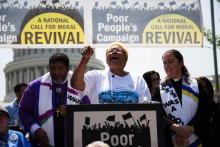
This Saturday, people across the country will come together digitally to demand action from public officials as part of the Mass Poor People’s Assembly & Moral March on Washington.